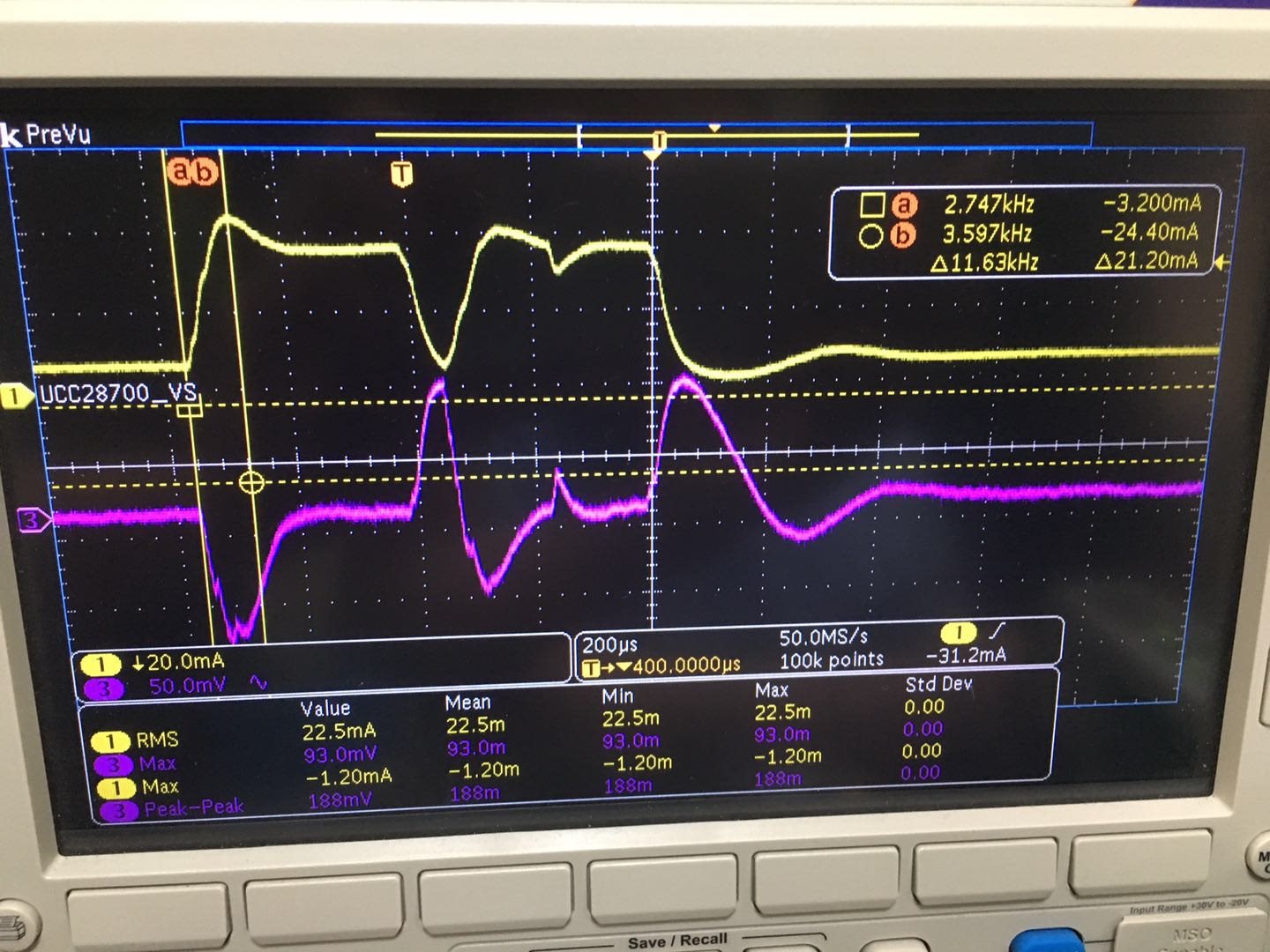Other Parts Discussed in Thread: TCAN1043
Hi,
A quick question regarding supply TCAN1043, currently my customer is using our LDO TPS7B82 to supply the CAN TCAN1043, and found that the load transient(~10mA- 40mA) when CAN is in communication lead to large over/under shoot, around 200mV. Customer is concerned if any risk on this large over/under shoot supply on TCAN1043's Vcc and how it affects.
Thanks.
Below yellow is the LDO output current(supplying CAN PHY TCAN1043), and purple is the LDO output voltage(AC coupled).


